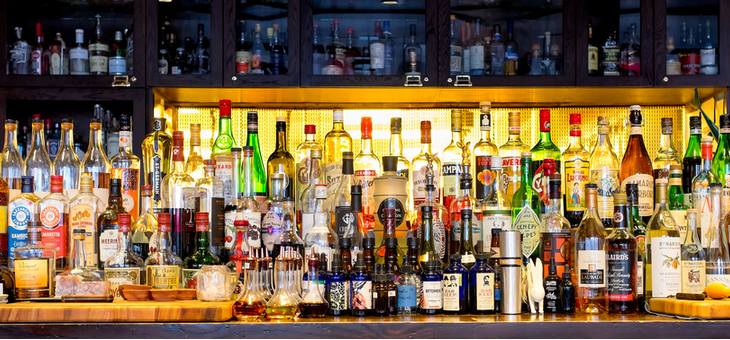The effects of drinking alcohol have long been studied, but most research tests only the effect of the alcohol itself – not the other elements that might be contained in the alcohol or in the packaging.
A new study has revealed that drinking alcohol could be worse for you than previously thought.
According to Science Daily, beer, wine and spirits could contain potentially harmful levels of toxic elements, such as lead and cadmium in the enamelled decorations.
Researchers from the University of Plymouth analysed the glass and enamelled adornments on a variety of clear and coloured bottles. They found that cadmium, lead and chromium were all present in the glass in concentrations where the environmental and health risks were deemed to be of low significance.
However, cadmium concentrations of up to 20,000 parts per million were found in the decorated elements on a range of spirit, beer and wine bottles, as well as lead concentrations of up to 80,000ppm in the decorations on various wine bottles. The limit for lead in consumer paints is 90ppm.
The toxic elements found in these alcohol bottles can leach from enamelled glass fragments and be hazardous, according to standard US Model Toxins in Packaging Legislation tests.
Other tests have previously shown how paint or enamel on items such as playground equipment, second-hand toys and drinking glasses can expose humans to levels of toxic substances that are potentially harmful.
“It has always been a surprise to see such high levels of toxic elements in the products we use on a daily basis,” said researcher Dr Andrew Turner. “This is just another example of that, and further evidence of harmful elements being unnecessarily used where there are alternatives available. The added potential for these substances to leach into other items during the waste and recycling process is an obvious and additional cause for concern.”
The bottles tested were either clear, frosted, green, ultraviolet-absorbing green (UVAG) or brown with several featuring enamelled decorations on part of the exterior surface.
From 89 bottles and fragments analysed using X-ray fluorescence (XRF) spectrometry, 76 were positive for low levels of lead and 55 were positive for cadmium. Chromium was detected in all green and UVAG bottles, but was only in 40 per cent of brown glass. Chromium was not found in clear glass.
The enamels of 12 products out of 24 enamelled products tested were based wholly or partly on compounds of either or both lead and cadmium.
Governments across the world have legislation in place to restrict the use of harmful substances on everyday products, but Dr Turner revealed where suppliers may still be putting your health at risk.
“When we contacted suppliers, many of them said the bottles they use are imported or manufactured in a different country than that producing the beverage,” said Dr Turner.
“This poses obvious challenges for the glass industry and for glass recycling and is perhaps something that needs to be factored into future legislation covering this area.”
Will this change your drinking choices?
If you enjoy our content, don’t keep it to yourself. Share our free eNews with your friends and encourage them to sign up.
Related articles:
Drinking habit could shorten life
Moderate drinking not so healthy
Could I be classed as an alcoholic?

